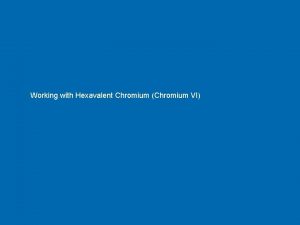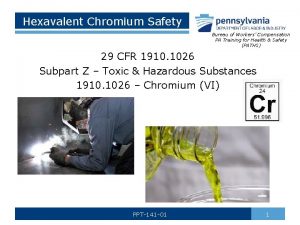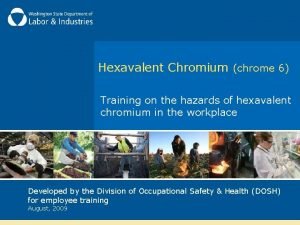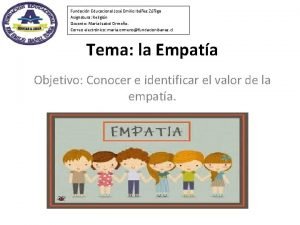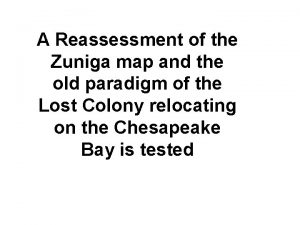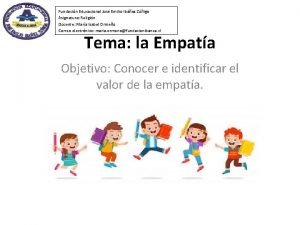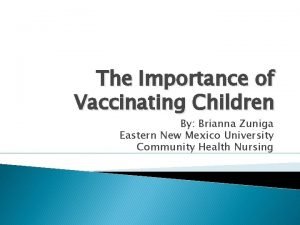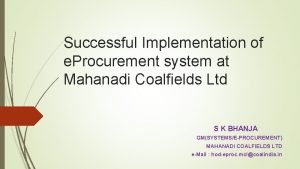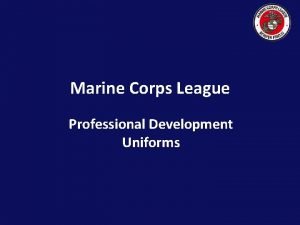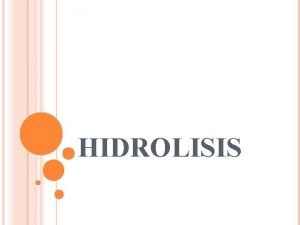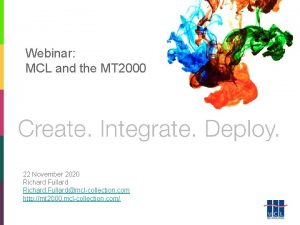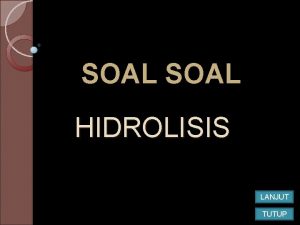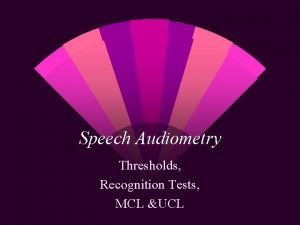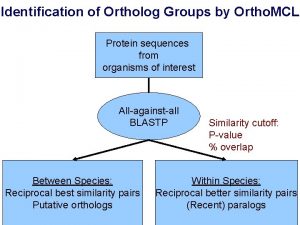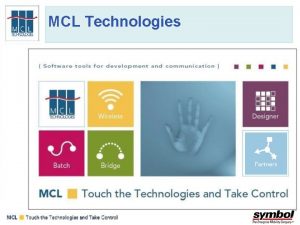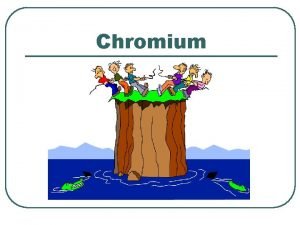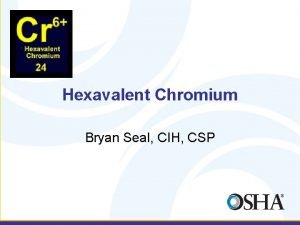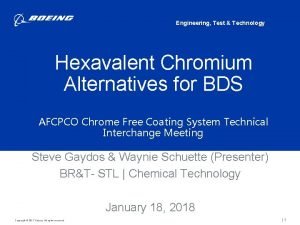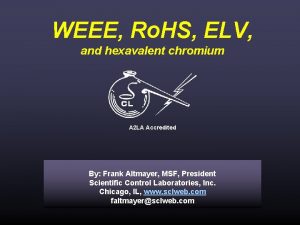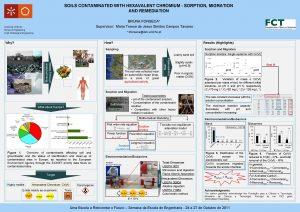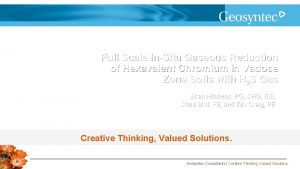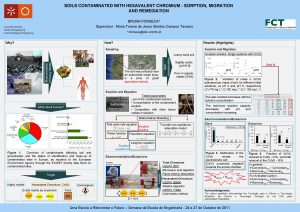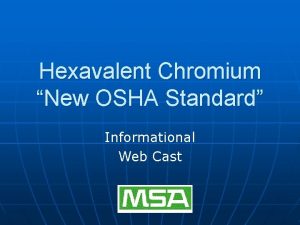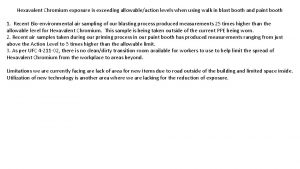Hexavalent Chromium MCL Regulation Guidance Eric Zuniga PE
















- Slides: 16

Hexavalent Chromium MCL Regulation Guidance Eric Zuniga, PE San Bernardino District SWRCB – DDW

Cr 6 MCL Regulation Development Background l l l Chromium is a heavy metal that occurs throughout the environment. The trivalent form (chromium-3) is a required nutrient. The hexavalent form (chromium-6) has been known to cause cancer when inhaled and has also been linked to cancer when ingested Low-levels of chromium-6 in drinking water is naturally occurring and present in geological formations throughout CA Areas of contamination also from historic industrial use (manufacturing of textile dyes, wood preservatives, leather tanning, anti-corrosion coatings)

Cr 6 MCL Regulation Development History of Regulation l l 2000: Public awareness of chromium-6 increased with release of the Erin Brokovich movie Prior to the MCL, chromium-6 is regulated as total chromium (CA MCL: 50 ppb, CA DLR: 10 ppb, US EPA: 100 ppb)

Cr 6 MCL Regulation Development Regulation l l l Proposed MCL of 10 ppb announced in August 2013, initiated a public review and comment period, 2 public hearings, over 18, 000 comments received. On July 1 st, 2014 - in accordance with California’s statutory requirements - an MCL of 10 ppb for hexavalent chromium became effective. The MCL applies to applicable public water systems. The MCL was the first in the country specific to hexavalent chromium.

Cr 6 MCL Implementation Initial Monitoring l l Initial sampling from all sources was to be completed by January 1, 2015. Results collected between July 1, 2012 and June 30, 2014 could be grandfathered for initial sampling (GW sources only) Quarterly monitoring is triggered if the initial sample is greater than 10 ppb Compliance based on an average of the samples taken over 4 consecutive quarters

Cr 6 MCL Implementation Routine Monitoring l If the initial sample did not exceed 10 ppb: – – l l Groundwater: One sample every 3 years Surface water: Annual sampling If the initial sample was grandfathered, sampling is due 3 years from the previous sampling date Total chromium may be substituted for routine monitoring if total chromium is non-detect (CA DLR = 10 ppb)

Cr 6 MCL Implementation MCL Exceedances l MCL Exceedances require Tier 2 public notification when water exceeding the MCL is delivered to the public – – Direct delivery to each customer, posting in public place/Internet, newspaper publication, and community organizations Must be given within 30 days, repeated every 3 months

Cr 6 MCL Implementation Compliance Plan Criteria l l Senate Bill (SB 385) became effective on September 4, 2015. Provides additional time for systems to come into compliance with the new MCL – l No later than January 1, 2020 A plan for compliance within the shortest period of time and milestones for accountability

Cr 6 MCL Implementation Compliance Plan Criteria l Letter of Intent – a written notice to the Division from a public water system who is in violation of the MCL – l Declare intent to submit a Compliance Plan – l No later than March 31, 2016 No later than June 30, 2016 http: //www. waterboards. ca. gov/drinking_water/ certlic/drinkingwater/documents/lawbook/sb 385 _hexavalent_chromium_compliance_fnl_. pdf

Cr 6 MCL Implementation Compliance Plan Criteria l Compliance Plan – – Why it is not feasible for a water system to presently comply Summary of the available funding sources and options evaluated to be in compliance Dates, method and content of Public Notification, twice annually Begin and end dates for each milestone

Cr 6 MCL Implementation Compliance Plan Criteria l Description of milestone actions, including but not limited to: – – – – Evaluation/Planning/Feasibility Study Design, including treatment options Environmental Review Funding Land acquisition, if needed Construction Contracting Construction, and Testing

Cr 6 MCL Implementation Compliance Plan Criteria l l l Quarterly progress reports, updates on status of milestone activities Chromium-6 monitoring running annual averages and results Public Notice: – http: //www. waterboards. ca. gov/drinking_water/certli c/drinkingwater/documents/lawbook/sb 385_hex_chr omium_pub_notice_temp. pdf

Cr 6 MCL Implementation Other Corrective Actions l Possible actions include: – – – l Treatment Possibilities – – l Inactivating the well (physical disconnection) Standby status (limited use per Title 22, CCR) BLENDING should be evaluated [BAT] Strong Base Ion Exchange Weak Base Ion Exchange Reduction-Coagulation/Filtration (RCF) [BAT] Reverse Osmosis Piloting is strongly recommended

Cr 6 MCL Implementation Corrective Actions l l If you have not already done so, discuss with our local SWRCB-DDW District Office or County Environmental Health Program Compliance Order will require submittal of corrective action plan with timeline and milestones to be achieved to return to compliance (3 years)

Cr 6 MCL Implementation Financial Assistance l Funding is available through Safe Drinking Water State Revolving Fund – – l Low-interest loans (~2%, 20 -year repayment) Disadvantaged community status will be reviewed for grant eligibility FAAST application – – Can begin application process at any time General application package to get started NO MORE PRE-APPLICATION, PRIORITY LIST, OR INVITATION

Cr 6 MCL package development… In the future l l l The State Board’s Division of Drinking Water (DDW), as well as OEHHA, will continue to follow new scientific evidence pertaining to health effects from hexavalent chromium exposure. The DDW will continue to follow treatment technologies, and their associated costs, for hexavalent chromium. Changes in treatment costs or the PHG can lead to revisions in the MCL. U. S. EPA is currently gathering information in consideration of establishing a hexavalent chromiumspecific MCL. If U. S. EPA establishes a lower MCL than California’s, California will adopt a standard at that standard or one that is lower.
 Chromium 6 health effects
Chromium 6 health effects Hexavalent chromium safety program
Hexavalent chromium safety program Hexavalent chromium training
Hexavalent chromium training Fundacion jose emilio ibañez zuñiga
Fundacion jose emilio ibañez zuñiga Roonoke
Roonoke Fundacion jose emilio ibañez zuñiga
Fundacion jose emilio ibañez zuñiga Classify the food items in exercise 1 countable nouns
Classify the food items in exercise 1 countable nouns Brianna zuniga
Brianna zuniga Letra de amor de temporada
Letra de amor de temporada Mcl e procurement
Mcl e procurement Marine corps league cover
Marine corps league cover Reaksi hidrolisis hcoona
Reaksi hidrolisis hcoona Mcl designer
Mcl designer Contoh soal hidrolisis garam
Contoh soal hidrolisis garam Mcl and ucl
Mcl and ucl Ortho mcl
Ortho mcl Mcl technologies
Mcl technologies
